#Martian lander
Text

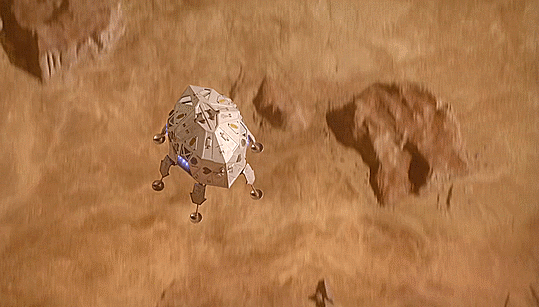

2000s-era Martian Lander "Have a Nice Sol"
#For All Mankind#Have a Nice Sol#martian lander#spaceship#lander#mars#happy valley#appletvsource#forallmankindedit#famedit#tvedit#scifiedit#spaceshipedit#GIF#my gifs#Danny watches For All Mankind#spoilers#for all mankind spoilers#hide and queue
180 notes
·
View notes
Text
Guys. There was a conceptual design for a lunar (or martian?) landing mechanism that involved a bunch of big pads being inflated around the module, such that when it landed, it would spread out the impact by bouncing around for a while before finally settling, at which point it would deflate itself. There was a gif associated with it, too. I need to find this, and all of my efforts so far have been in vain. I'm having a conversation about both the Odysseus lander and Weebles, and this is the crucial link between the two.
#lander#lunar lander#nasa#martian lander#Odysseus Lunar Lander#odysseus lander#space lander#moon mission#space#idk what other tag spam to put on this
0 notes
Text
here is his latest selfie!
here is his latest selfie!
You will also be interested
[EN VIDÉO] Mars InSight: a geophysicist on Mars Launched in May 2018 and installed on Mars in November, the InSight lander must explore the least well-known environment of the Red Planet: its basement, up to its core. Thanks to sophisticated instruments, including a seismometer and a five-meter drill, it has enough to help us better understand our little neighbor.
It…
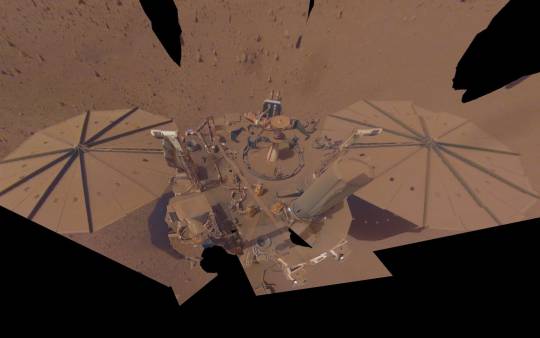
View On WordPress
0 notes
Text

It’s official… Controllers at NASA’s Jet Propulsion Laboratory (JPL) were unable to communicate with the the InSight Mars lander after two consecutive attempts earlier this month, which means the solar-powered batteries have run out of juice. Simply put, the lander is dead. After conducting years of unique and incredibly valuable science, NASA has officially retired InSight. This is its final image. Good night, sweet prince.
#nasa#space#engineering#science#technology#aerospace#spaceflight#space exploration#mars#martian#rover#lander#robot#robotics#nasa insight#insight
289 notes
·
View notes
Link
The Space News Podcast. SpaceTime Series 26 Episode 131 *Mystery of the Martian core solved A new study of data from NASA’s Mars Insight lander mission has concluded that the Martian liquid metallic core is both smaller and denser than previously thought -- but also that it’s surrounded by a layer of molten rock. *Protecting Europa Clipper from Jupiter’s immense radiation Engineers have just completed the final piece of armour designed to protect NASA’s Europa clipper spacecraft from intense radiation during its mission to explore the Jovian ice moon Europa. *India launches its first crew capsule India has carried out a successful test flight of its new manned capsule which will the subcontinent’s first astronauts into orbit in 2025. *The Science Report A new study warns that future increases in ice-shelf melting in the West Antarctic are now potentially unavoidable. Claims vegetarianism may be partly related to your genes. Eastern Mediterranean was once a region of green savannahs and grasslands that provided an ideal passage for multiple early human movements out of Africa. Alex on Tech new AI chips and happy 22nd birthday to the I-pod. If you love this podcast, please get someone else to listen to. Thank you… To become a SpaceTime supporter and unlock commercial free editions of the show, gain early access and bonus content, please visit https://bitesz.supercast.com/ . Premium version now available via Spotify and Apple Podcasts. For more podcasts visit our HQ at https://bitesz.com Your support is needed... **Support SpaceTime with Stuart Gary: Be Part of Our Cosmic Journey!** SpaceTime is fueled by passion, not big corporations or grants. We're on a mission to become 100% listener-supported, allowing us to focus solely on bringing you riveting space stories without the interruption of ads. 🌌 **Here's where you shine:** Help us soar to our goal of 1,000 subscribers! Whether it's just $1 or more, every contribution propels us closer to a universe of ad-free content. **Elevate Your Experience:** By joining our cosmic family at the $5 tier, you'll unlock: - Over 350 commercial-free, triple episode editions. - Exclusive extended interviews. - Early access to new episodes every Monday. Dive in with a month's free trial on Supercast and discover the universe of rewards waiting for you! 🌠 🚀 [Join the Journey with SpaceTime](https://bitesznetwork.supercast.tech/) 🌟 [Learn More About Us](https://spacetimewithstuartgary.com) Together, let's explore the cosmos without limits!
#armor#clipper#core#europa#ice#india#insight#isro#jovian#jupiter#lander#liquid#mars#martian#metallic#molten#moon#radiation#rock#spacecraft
0 notes
Text

9 Out-of-This-World Moments for Space Communications & Navigation in 2023
How do astronauts and spacecraft communicate with Earth?
By using relay satellites and giant antennas around the globe! These tools are crucial to NASA’s space communications networks: the Near Space Network and the Deep Space Network, which bring back science and exploration data every day.
It’s been a great year for our space communications and navigation community, who work to maintain the networks and enhance NASA’s capabilities. Keep scrolling to learn more about our top nine moments.

The SpaceX Falcon 9 rocket carrying the Dragon spacecraft lifts off from Launch Complex 39A at NASA's Kennedy Space Center in Florida on Thursday, Nov. 9, 2023, on the company's 29th commercial resupply services mission for the agency to the International Space Station. Liftoff was at 8:28 p.m. EST.
1. In November, we launched a laser communications payload, known as ILLUMA-T, to the International Space Station. Now, ILLUMA-T and the Laser Communications Relay Demonstration (LCRD) are exchanging data and officially complete NASA’s first two-way, end-to-end laser relay system. Laser communications can send more data at once than traditional radio wave systems – think upgrading from dial-up to fiber optic internet. ILLUMA-T and LCRD are chatting at 1.2 gigabits per second (Gbps). At that rate, you could download an average movie in under a minute.
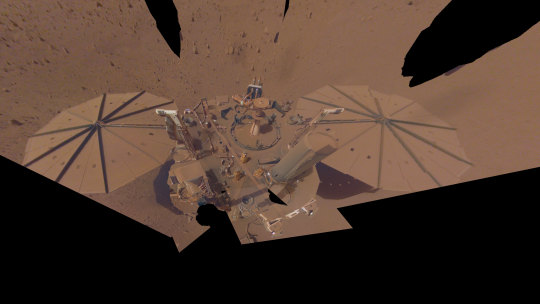
NASA’s InSight lander captured this selfie on Mars on April 24, 2022, the 1,211th Martian day, or sol, of the mission.
2. Data analyzed in 2023 from NASA’s retired InSight Mars lander provided new details about how fast the Red Planet rotates and how much it wobbles. Scientists leveraged InSight’s advanced radio technology, upgrades to the Deep Space Network, and radio signals to determine that Mars’ spin rate is increasing, while making the most precise measurements ever of Mars’ rotation.
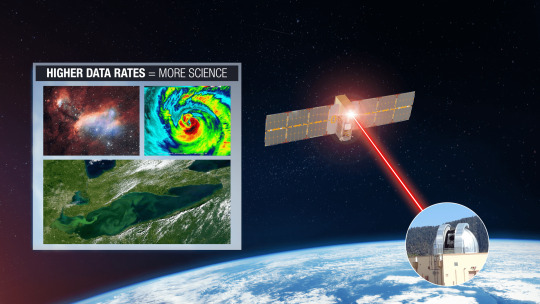
TBIRD is demonstrating a direct-to-Earth laser communications link from low Earth orbit to a ground station on Earth.
3. We set a new high record! The TeraByte InfraRed Delivery (TBIRD) payload – also demonstrating laser communications like ILLUMA-T and LCRD – downlinked 4.8 terabytes of data at 200 Gbps in a single 5-minute pass. This is the highest data rate ever achieved by laser communications technology. To put it in perspective a single terabyte is the equivalent of about 500 hours of high-definition video.
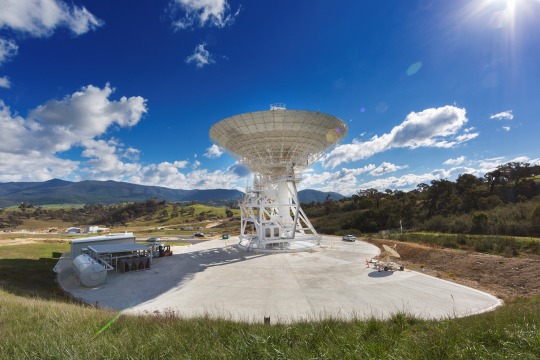
A 34-meter (112-foot) wide antenna at Canberra Deep Space Communications Complex near Canberra, Australia.
4. This year we celebrated the Deep Space Network’s 60th anniversary. This international array of antennas located at three complexes in California, Spain, and Australia allow us to communicate with spacecraft at the Moon and beyond. Learn more about the Deep Space Network’s legacy and future advancements.
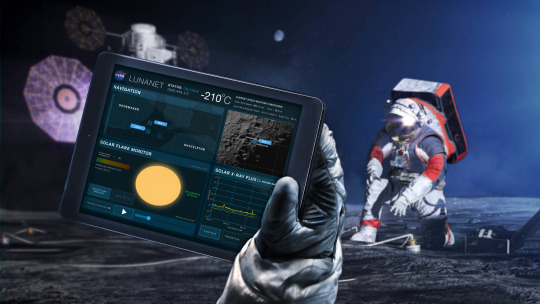
An illustration of the LunaNet architecture. LunaNet will bring internet-like services to the Moon.
5. We are bringing humans to the Moon with Artemis missions. During expeditions, astronauts exploring the surface are going to need internet-like capabilities to talk to mission control, understand their routes, and ensure overall safety. The space comm and nav group is working with international partners and commercial companies to develop LunaNet, and in 2023, the team released Draft LunaNet Specification Version 5, furthering development.
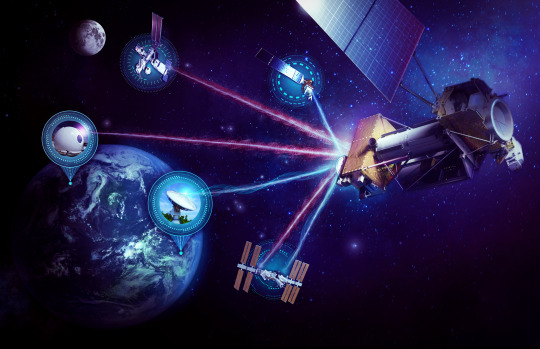
The High-Rate Delay Tolerant Networking node launched to the International Space Station in November and will act as a high-speed path for data.
6. In addition to laser communications, ILLUMA-T on the International Space Station is also demonstrating high-rate delay/disruption tolerant networking (HDTN). The networking node is showcasing a high-speed data path and a store-and-forward technique. HDTN ensures data reaches its final destination and isn’t lost on its path due to a disruption or delay, which are frequent in the space environment.

The Communications Services Project (CSP) partners with commercial industry to provide networking options for future spaceflight missions.
7. The space comm and nav team is embracing the growing aerospace industry by partnering with commercial companies to provide multiple networking options for science and exploration missions. Throughout 2023, our commercialization groups engaged with over 110 companies through events, one-on-one meetings, forums, conferences, and more. Over the next decade, NASA plans to transition near-Earth services from government assets to commercial infrastructure.

Middle and high school students solve a coding experiment during NASA's Office of STEM Engagement App Development Challenge.
8. Every year, NASA’s Office of STEM Engagement sponsors the App Development Challenge, wherein middle and high school students must solve a coding challenge. This year, student groups coded an application to visualize the Moon’s South Pole region and display information for navigating the Moon’s surface. Our space communications and navigation experts judged and interviewed students about their projects and the top teams visited NASA’s Johnson Space Center in Houston!
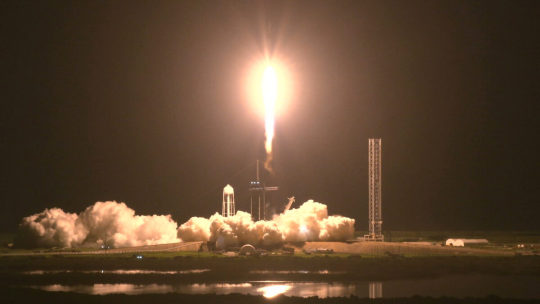
A SpaceX Falcon 9 rocket soars upward after liftoff at the pad at 3:27 a.m. EDT on Saturday, Aug. 26, from Kennedy Space Center’s Launch Complex 39A in Florida carrying NASA’s SpaceX Crew-7 crew members to the International Space Station. Aboard SpaceX’s Dragon spacecraft are NASA astronaut Jasmin Moghbeli, ESA (European Space Agency) astronaut Andreas Mogensen, JAXA (Japan Aerospace Exploration Agency) astronaut Satoshi Furukawa, and Roscosmos cosmonaut Konstantin Borisov.
9. The Near Space Network supported 19 launches in 2023! Launches included Commercial Crew flights to the International Space Station, science mission launches like XRISM and the SuperBIT balloon, and many more. Once in orbit, these satellites use Near Space Network antennas and relays to send their critical data to Earth. In 2023, the Near Space Network provided over 10 million minutes of communications support to missions in space.
Here’s to another year connecting Earth and space.
Make sure to follow us on Tumblr for your regular dose of space!
1K notes
·
View notes
Text

If You Could Stand on Mars - February 7th, 1996.
"If you could stand on Mars - what would you see? Viking 1 robot landers answered this question in 1976, with pictures like the one shown above. The dark rocks, red soil, and green-tinged sky grace this rendition of a normal Martian afternoon. At the bottom corners of the picture are portions of Viking spacecraft. The red colour of the rocks is caused by an abundance of iron in the soil. The Martian surface is covered by rocks, huge craters, fantastic canyons, and gigantic volcanoes that dwarf any on Earth. No life has been found, but some speculate that since not all spacecraft reaching Mars from Earth had been fully decontaminated, Earth-born microbes might live there now."
66 notes
·
View notes
Text
According to data from the now-retired InSight lander, Mars' rotation is accelerating each year by around 4 milliarcseconds. That's a very small amount – shortening the length of a Mars day by just a fraction of a millisecond every Martian year – but the reason for it is not immediately apparent.
However, the finding could lead us to a better understanding of Mars and its past evolution. The current forerunning hypotheses explaining the acceleration are long-term trends – such as accumulating material at the polar ice caps – and interior dynamics.
"It's really cool to be able to get this latest measurement – and so precisely," says planetary geophysicist Bruce Banerdt of NASA's Jet Propulsion Laboratory. "I've been involved in efforts to get a geophysical station like InSight onto Mars for a long time, and results like this make all those decades of work worth it."
Continue Reading
94 notes
·
View notes
Text
Terra Sabaea and Arabia Terra – ESA Mars Express

One of my all-time favourite images of Mars is this enhanced colour image captured by ESA's Mars Express orbiter on 17 June 2019. It shows a beautiful slice of the Red Planet stretching from the north polar cap to the northern rim of Hellas Planitia, highlighting the crater surface of Terra Sabaea and Arabia Terra. The original image has a resolution of about 1 km/pixel.
To the north, two craters stand out to me: Lyot (a complex crater in Vastitas Borealis) and Moreux (a smaller but visually darker crater in a geologically complex region of Arabia Terra). Near the centre of frame are a pair of large but shallow craters: Cassini and Tikhonravov. To the south lies Huygens, the largest crater on Mars with a well defined rim.
About the mission
Mars Express was launched from the Baikonur Cosmodrome on 2 June 2003 and entered into orbit around Mars in record time on 25 December 2003. It's the second longest lasting Mars orbiter in history after NASA's 2001 Mars Odyssey orbiter.
Due to its flexibility and importance in the study of Mars, the mission has been repeatedly extended to as far out as 2026, with a further provisional extension to 2028 likely. It's hard to believe that this was the same orbiter that deployed the failed Beagle 2 lander to the Martian surface almost 20 years ago.

14 notes
·
View notes
Text

New SpaceTime out Wednesday...
SpaceTime 20231101 Series 26 Episode 131
Mystery of the Martian core solved
A new study of data from NASA’s Mars Insight lander mission has concluded that the Martian liquid metallic core is both smaller and denser than previously thought -- but also that it’s surrounded by a layer of molten rock.




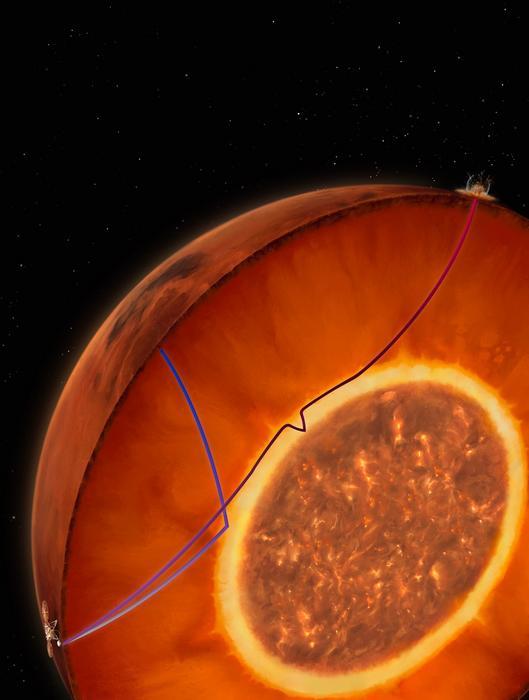

Protecting Europa Clipper from Jupiter’s immense radiation
Engineers have just completed the final piece of armour designed to protect NASA’s Europa clipper spacecraft from intense radiation during its mission to explore the Jovian ice moon Europa.


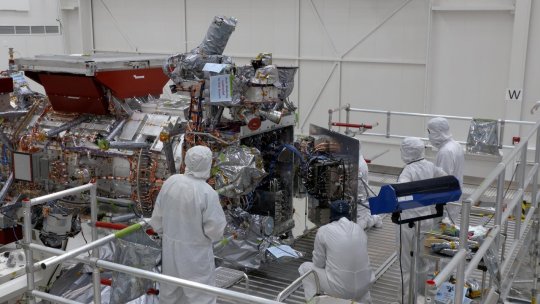

India launches its first crew capsule
India has carried out a successful test flight of its new manned capsule which will the subcontinent’s first astronauts into orbit in 2025.
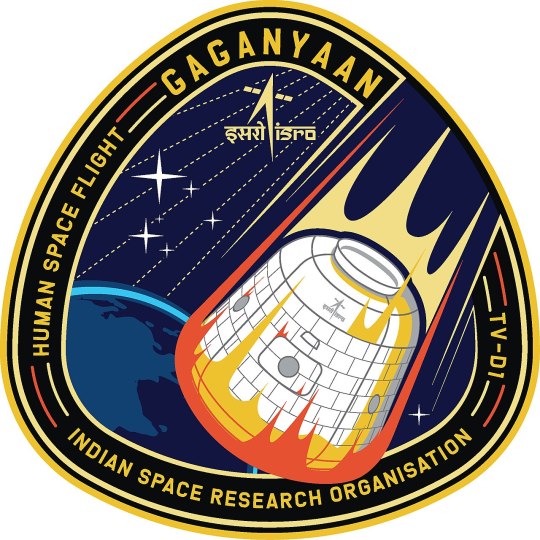

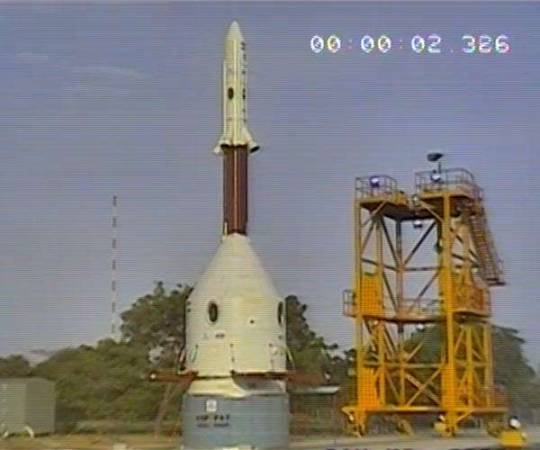


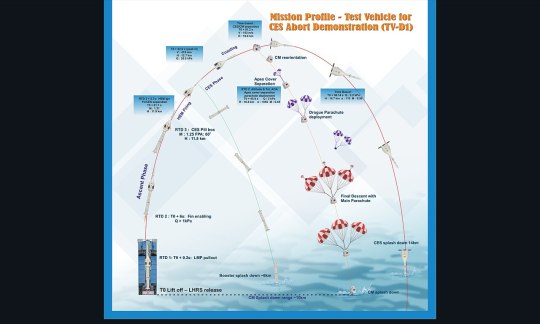


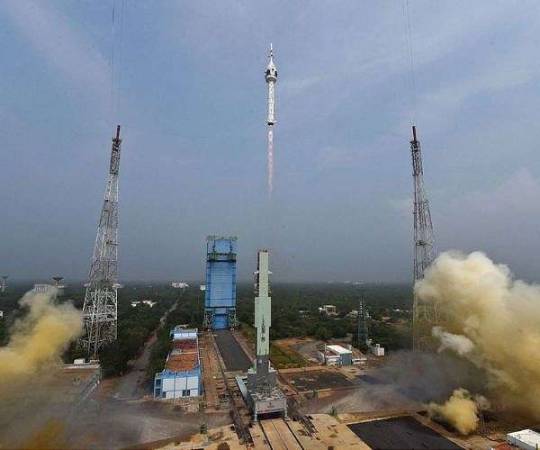
The Science Report
A new study warns that future increases in ice-shelf melting in the West Antarctic are now potentially unavoidable.
Claims vegetarianism may be partly related to your genes.
Eastern Mediterranean was once a region of green savannahs and grasslands that provided an ideal passage for multiple early human movements out of Africa.
Alex on Tech new AI chips and happy 22nd birthday to the I-pod.
SpaceTime covers the latest news in astronomy & space sciences.
The show is available every Monday, Wednesday and Friday through Apple Podcasts (itunes), Stitcher, Google Podcast, Pocketcasts, SoundCloud, Bitez.com, YouTube, your favourite podcast download provider, and from www.spacetimewithstuartgary.com
SpaceTime is also broadcast through the National Science Foundation on Science Zone Radio and on both i-heart Radio and Tune-In Radio.
SpaceTime daily news blog: http://spacetimewithstuartgary.tumblr.com/
SpaceTime facebook: www.facebook.com/spacetimewithstuartgary
SpaceTime Instagram @spacetimewithstuartgary
SpaceTime twitter feed @stuartgary
SpaceTime YouTube: @SpaceTimewithStuartGary
SpaceTime -- A brief history
SpaceTime is Australia’s most popular and respected astronomy and space science news program – averaging over two million downloads every year. We’re also number five in the United States. The show reports on the latest stories and discoveries making news in astronomy, space flight, and science. SpaceTime features weekly interviews with leading Australian scientists about their research. The show began life in 1995 as ‘StarStuff’ on the Australian Broadcasting Corporation’s (ABC) NewsRadio network. Award winning investigative reporter Stuart Gary created the program during more than fifteen years as NewsRadio’s evening anchor and Science Editor. Gary’s always loved science. He studied astronomy at university and was invited to undertake a PHD in astrophysics, but instead focused on his career in journalism and radio broadcasting. He worked as an announcer and music DJ in commercial radio, before becoming a journalist and eventually joining ABC News and Current Affairs. Later, Gary became part of the team that set up ABC NewsRadio and was one of its first presenters. When asked to put his science background to use, Gary developed StarStuff which he wrote, produced and hosted, consistently achieving 9 per cent of the national Australian radio audience based on the ABC’s Nielsen ratings survey figures for the five major Australian metro markets: Sydney, Melbourne, Brisbane, Adelaide, and Perth. The StarStuff podcast was published on line by ABC Science -- achieving over 1.3 million downloads annually. However, after some 20 years, the show finally wrapped up in December 2015 following ABC funding cuts, and a redirection of available finances to increase sports and horse racing coverage. Rather than continue with the ABC, Gary resigned so that he could keep the show going independently. StarStuff was rebranded as “SpaceTime”, with the first episode being broadcast in February 2016. Over the years, SpaceTime has grown, more than doubling its former ABC audience numbers and expanding to include new segments such as the Science Report -- which provides a wrap of general science news, weekly skeptical science features, special reports looking at the latest computer and technology news, and Skywatch – which provides a monthly guide to the night skies. The show is published three times weekly (every Monday, Wednesday and Friday) and available from the United States National Science Foundation on Science Zone Radio, and through both i-heart Radio and Tune-In Radio.
#science#space#astronomy#physics#news#nasa#esa#astrophysics#spacetimewithstuartgary#starstuff#spacetime
21 notes
·
View notes
Text
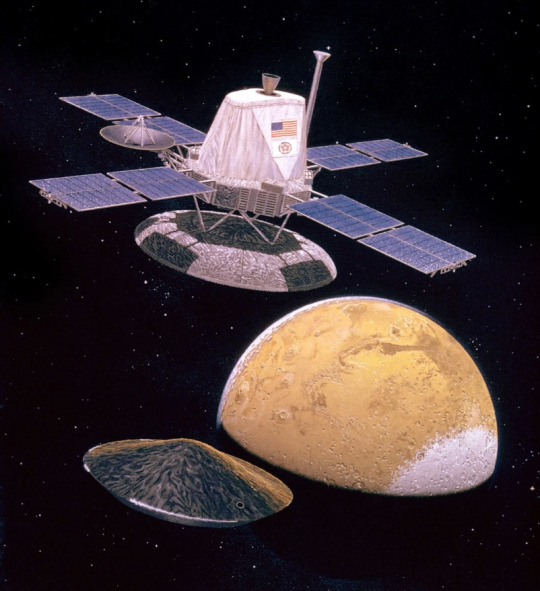

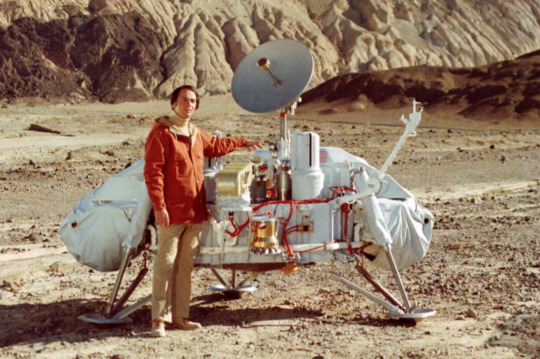


July 20, 1976: Viking 1 becomes the first American spacecraft to land on Mars.
The first of two Project Viking missions to Mars, Viking 1 landed on Chryse Planitia on the 15th anniversary of the Apollo 11 moon landing. During its six years of surface operations, the lander analyzed four samples of Martian regolith in search for organic compounds. The Viking 1 orbiter is best remembered for snapping a peculiar picture of Mount Cydonia, famously known today as the "Face on Mars".
Learn more about Project Viking here!
29 notes
·
View notes
Text




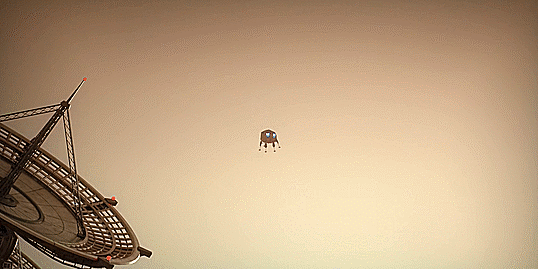

Phoenix and Hopper 3, "Crossing the Line"
#For All Mankind#Crossing the Line#Hopper 3#Phoenix#Phoenix spacecraft#martian lander#spoilers#spaceship#for all mankind spoilers#appletvsource#forallmankindedit#tvedit#scifiedit#spaceshipedit#GIF#my gifs#Danny watches For All Mankind#Hide and Queue
100 notes
·
View notes
Photo
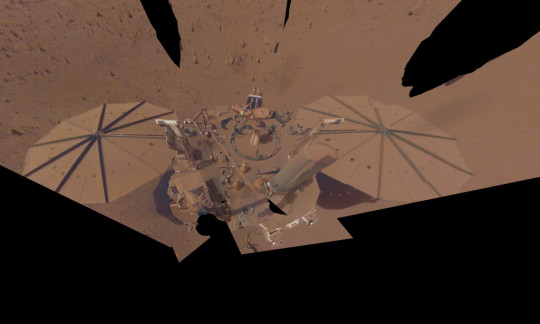
2022 November 4
InSight's Final Selfie
Image Credit: NASA, JPL-Caltech, Mars InSight
Explanation: The Mars InSight lander returned its first image from the Red Planet's flat, equatorial Elysium Planitia after a successful touchdown on November 26, 2018. The history making mission to explore the martian Interior using Seismic investigations, geodesy, and heat transport has been operating for over 1,400 martian days or sols. In that time the InSight mission has detected more than 1,300 marsquakes and recorded data from Mars-shaking meteoroid impacts, observing how the seismic waves travel to provide a glimpse inside Mars. Analyzing the archive of data collected is expected to yield discoveries for decades. But InSight's final operational sol is likely not far off. The reason is evident in this selfie recorded earlier this year showing its deck and large, 2-meter-wide solar panels covered with dust. Kicked up by martian winds the dust continues to accumulate and drastically reduce the power that can be generated by InSight's solar panels.
∞ Source: apod.nasa.gov/apod/ap221104.html
75 notes
·
View notes
Text
From the Moon’s south pole to an ice-covered ocean world, several exciting space missions are slated for launch in 2024
by Ali M. Bramson, Assistant Professor of Earth, Atmospheric, and Planetary Sciences at Purdue University
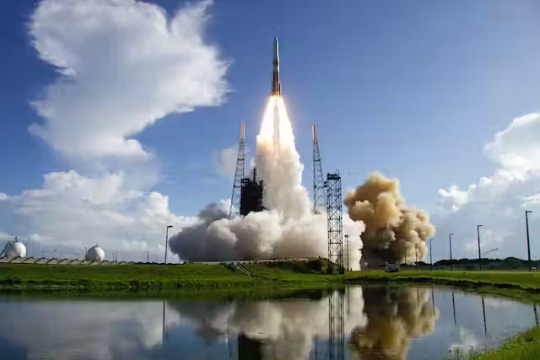
The year 2023 proved to be an important one for space missions, with NASA’s OSIRIS-REx mission returning a sample from an asteroid and India’s Chandrayaan-3 mission exploring the lunar south pole, and 2024 is shaping up to be another exciting year for space exploration.
Several new missions under NASA’s Artemis plan and Commercial Lunar Payload Services initiative will target the Moon.
The latter half of the year will feature several exciting launches, with the launch of the Martian Moons eXploration mission in September, Europa Clipper and Hera in October and Artemis II and VIPER to the Moon in November – if everything goes as planned.
I’m a planetary scientist, and here are six of the space missions I’m most excited to follow in 2024.
1. Europa Clipper
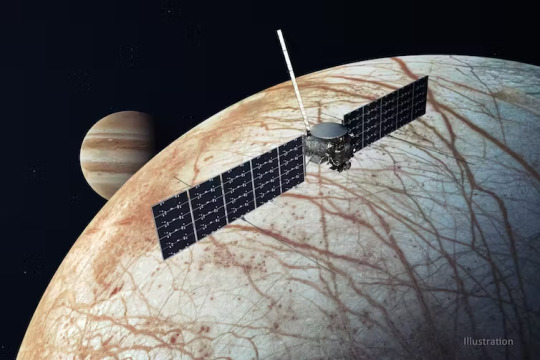
NASA will launch Europa Clipper, which will explore one of Jupiter’s largest moons, Europa. Europa is slightly smaller than Earth’s Moon, with a surface made of ice. Beneath its icy shell, Europa likely harbors a saltwater ocean, which scientists expect contains over twice as much water as all the oceans here on Earth combined.
With Europa Clipper, scientists want to investigate whether Europa’s ocean could be a suitable habitat for extraterrestrial life.
The mission plans to do this by flying past Europa nearly 50 times to study the moon’s icy shell, its surface’s geology and its subsurface ocean. The mission will also look for active geysers spewing out from Europa.
This mission will change the game for scientists hoping to understand ocean worlds like Europa.
The launch window – the period when the mission could launch and achieve its planned route – opens Oct. 10, 2024, and lasts 21 days. The spacecraft will launch on a SpaceX Falcon Heavy rocket and arrive at the Jupiter system in 2030.
2. Artemis II launch

The Artemis program, named after Apollo’s twin sister in Greek mythology, is NASA’s plan to go back to the Moon. It will send humans to the Moon for the first time since 1972, including the first woman and the first person of color. Artemis also includes plans for a longer-term, sustained presence in space that will prepare NASA for eventually sending people even farther – to Mars.
Artemis II is the first crewed step in this plan, with four astronauts planned to be on board during the 10-day mission.
The mission builds upon Artemis I, which sent an uncrewed capsule into orbit around the Moon in late 2022.
Artemis II will put the astronauts into orbit around the Moon before returning them home. It is currently planned for launch as early as November 2024. But there is a chance it will get pushed back to 2025, depending on whether all the necessary gear, such as spacesuits and oxygen equipment, is ready.
3. VIPER to search for water on the Moon
youtube
VIPER, which stands for Volatiles Investigating Polar Exploration Rover, is a robot the size of a golf cart that NASA will use to explore the Moon’s south pole in late 2024.
Originally scheduled for launch in 2023, NASA pushed the mission back to complete more tests on the lander system, which Astrobotic, a private company, developed as part of the Commercial Lunar Payload Services program.
This robotic mission is designed to search for volatiles, which are molecules that easily vaporize, like water and carbon dioxide, at lunar temperatures. These materials could provide resources for future human exploration on the Moon.
The VIPER robot will rely on batteries, heat pipes and radiators throughout its 100-day mission, as it navigates everything from the extreme heat of lunar daylight – when temperatures can reach 224 degrees Fahrenheit (107 degrees Celsius) – to the Moon’s frigid shadowed regions that can reach a mind-boggling -400 F (-240 C).
VIPER’s launch and delivery to the lunar surface is scheduled for November 2024.
4. Lunar Trailblazer and PRIME-1 missions

NASA has recently invested in a class of small, low-cost planetary missions called SIMPLEx, which stands for Small, Innovative Missions for PLanetary Exploration. These missions save costs by tagging along on other launches as what is called a rideshare, or secondary payload.
One example is the Lunar Trailblazer. Like VIPER, Lunar Trailblazer will look for water on the Moon.
But while VIPER will land on the Moon’s surface, studying a specific area near the south pole in detail, Lunar Trailblazer will orbit the Moon, measuring the temperature of the surface and mapping out the locations of water molecules across the globe.
Currently, Lunar Trailblazer is on track to be ready by early 2024.
However, because it is a secondary payload, Lunar Trailblazer’s launch timing depends on the primary payload’s launch readiness. The PRIME-1 mission, scheduled for a mid-2024 launch, is Lunar Trailblazer’s ride.
PRIME-1 will drill into the Moon – it’s a test run for the kind of drill that VIPER will use. But its launch date will likely depend on whether earlier launches go on time.
An earlier Commercial Lunar Payload Services mission with the same landing partner was pushed back to February 2024 at the earliest, and further delays could push back PRIME-1 and Lunar Trailblazer.
5. JAXA’s Martian Moon eXploration mission
youtube
While Earth’s Moon has many visitors – big and small, robotic and crewed – planned for 2024, Mars’ moons Phobos and Deimos will soon be getting a visitor as well. The Japanese Aerospace Exploration Agency, or JAXA, has a robotic mission in development called the Martian Moon eXploration, or MMX, planned for launch around September 2024.
The mission’s main science objective is to determine the origin of Mars’ moons. Scientists aren’t sure whether Phobos and Deimos are former asteroids that Mars captured into orbit with its gravity or if they formed out of debris that was already in orbit around Mars.
The spacecraft will spend three years around Mars conducting science operations to observe Phobos and Deimos. MMX will also land on Phobos’ surface and collect a sample before returning to Earth.
6. ESA’s Hera mission

Hera is a mission by the European Space Agency to return to the Didymos-Dimorphos asteroid system that NASA’s DART mission visited in 2022.
But DART didn’t just visit these asteroids, it collided with one of them to test a planetary defense technique called “kinetic impact.” DART hit Dimorphos with such force that it actually changed its orbit.
The kinetic impact technique smashes something into an object in order to alter its path. This could prove useful if humanity ever finds a potentially hazardous object on a collision course with Earth and needs to redirect it.
Hera will launch in October 2024, making its way in late 2026 to Didymos and Dimorphos, where it will study physical properties of the asteroids.
6 notes
·
View notes
Text
Round 2B

Mars Pathfinder: Before the dark, there was light. The Mars Pathfinder was part of a NASA mission to explore the surface of Mars, and it successfully landed on the planet on July 4, 1997– really, you can’t make that date up. The mission's primary goal was to study the geology, climate, and atmosphere of Mars and to demonstrate the feasibility of low-cost lander and rover missions. The lander, named Sojourner, deployed the first-ever successful Mars rover, which conducted experiments, took photographs, and transmitted valuable data back to Earth. The mission's achievements paved the way for further advancements, and the images and data provided valuable insights into the Martian environment; this massively impacted our understanding of the planet and laid a foundation for subsequent Mars missions, such as the beloved and oft-personified Mars rovers Spirit, Opportunity, and Curiosity.
Radiohead's OK Computer: I go forwards, you go backwards, and somewhere we will meet. By the middle of the decade, Radiohead was weary of the ubiquity of their 1993 hit Creep; although the record that followed it (The Bends) was a lusher, more evolved album than their first, it had failed to produce a distinctive enough sound and image for the band to undo what Creep had done. The song threatened to define the band entirely to those outside their devoted following. In 1997 the band swung for the fences with the haunting, abstract OK Computer. It was a move their label cast immense doubt on at the time, and its success then and now would cement Thom Yorke and his bandmates as soothsayers of a sort, draped not in bohemian silk robes but in white hospital sheets. It's an album that speaks to the future with dread more than wonder, that critics described as "nervous almost to the point of neurosis," but marries the uneasy experimental soundscapes with poetic, surrealist, and increasingly prophetic songwriting regarding the parallel lives we lead with technology. Featuring the singles Karma Police, Paranoid Android and No Surprises, OK Computer is hailed by many as the band's masterpiece, and is often cited by music publications as one of the greatest albums of the decade: it's certified double Platinum in the US and five-times Platinum in the UK, and in 2014 it was included in the United States National Recording Registry as "culturally, historically, or aesthetically significant."
8 notes
·
View notes
Photo


NASA’s InSight Lander Detects Stunning Meteoroid Impact on Mars
Christmas came a little early for NASA’s InSight mission last December when the lander detected a massive quake on Mars.
Now, scientists know what caused the red planet to rumble. A meteoroid slammed into Mars 2,174 miles (3,500 kilometers) away from the lander and created a fresh impact crater on the Martian surface.
The ground literally moved beneath InSight on December 24, 2021, when the lander recorded a magnitude 4 marsquake. Before and after photos captured from above by the Mars Reconnaissance Orbiter, which has been circling Mars since 2006, spotted a new crater this past February.
When scientists connected the dots from both missions, they realized it was one of the largest meteoroid strikes on Mars since NASA began studying the red planet. Images from the orbiter’s two cameras showed the blast zone of the crater, which allowed scientists to compare it with the epicenter of the quake detected by InSight.
The space rock also revealed boulder-size ice chunks when it slammed into Mars. They were found buried closer to the warm Martian equator than any ice that has ever been detected on the planet.
#NASA InSight Lander Detects Meteoroid Impact on Mars#nasa mars reconnaissance orbiter#nasa insight lander#mars#the roman god of war#nasa#nasa photos#nasa picture of the day#space#solar system#astronomy#amazing#ice on mars
43 notes
·
View notes